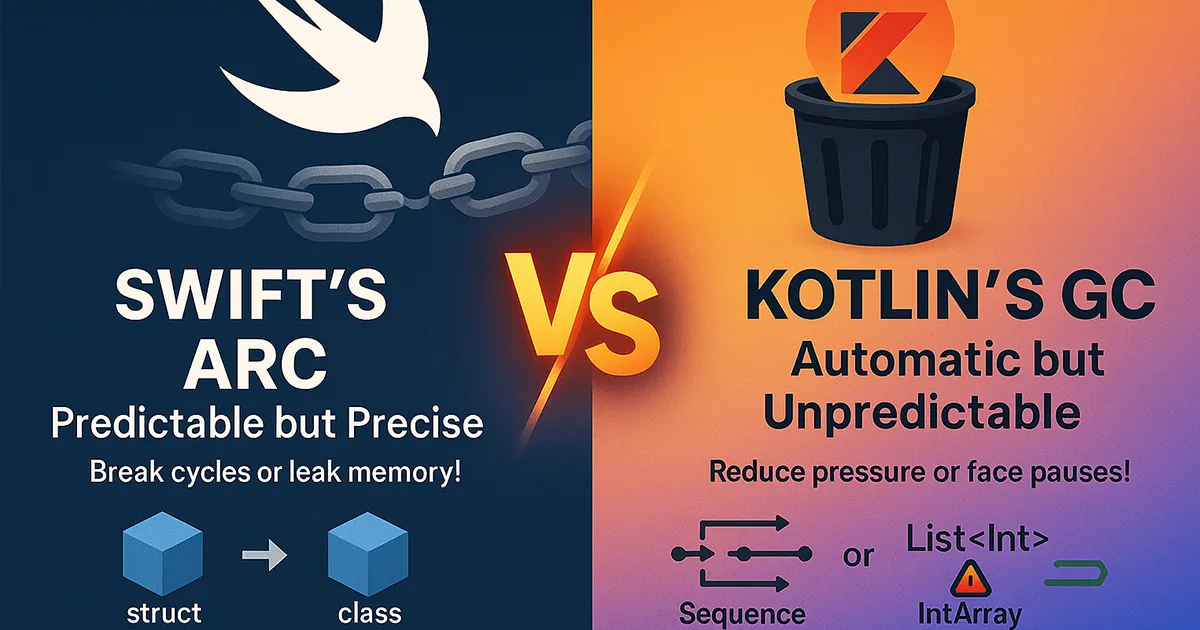Memory Management Face-Off: Swift’s ARC vs Kotlin’s GC
When it comes to mobile development, memory management isn’t a nice-to-have. It’s survival. Especially if you’ve built banking apps or business tools where a stutter in a scrolling list or a delayed calculation isn’t just annoying, it’s a problem. Let’s break down how Swift and Kotlin handle memory behind the scenes, and how we, as developers, can stay ahead of trouble.
Swift’s Automatic Reference Counting (ARC)
Swift uses Automatic Reference Counting (ARC) to track class instances. Each strong reference increments a counter. When the count hits zero, the instance is deallocated. Straightforward enough. The trouble starts when two objects hold strong references to each other. That creates a retain cycle and a memory leak.
On iOS projects I’ve worked on, particularly financial
apps that track user sessions and background transactions, I’ve seen
firsthand how missing a weak reference in a delegate pattern can quietly
consume memory over time. Breaking these cycles with weak and unowned references isn’t optional in setups like that.
Kotlin’s Garbage Collector (GC)
Kotlin on the JVM uses a Garbage Collector. It scans for objects no longer in use and removes them automatically.
The
downside is that GC pauses can slow down the app for a short time. On
Android, this can be noticeable during animations or when scrolling
large lists.
Key Optimization Techniques
1. Swift: Break Retain Cycles with weak and unowned
-
Problem: Two objects holding strong references to each other leak memory.
-
Solution: Use
weak(optional) orunowned(non-optional) references.
This is a must in delegate patterns. I never ship an iOS app without triple-checking these setups.
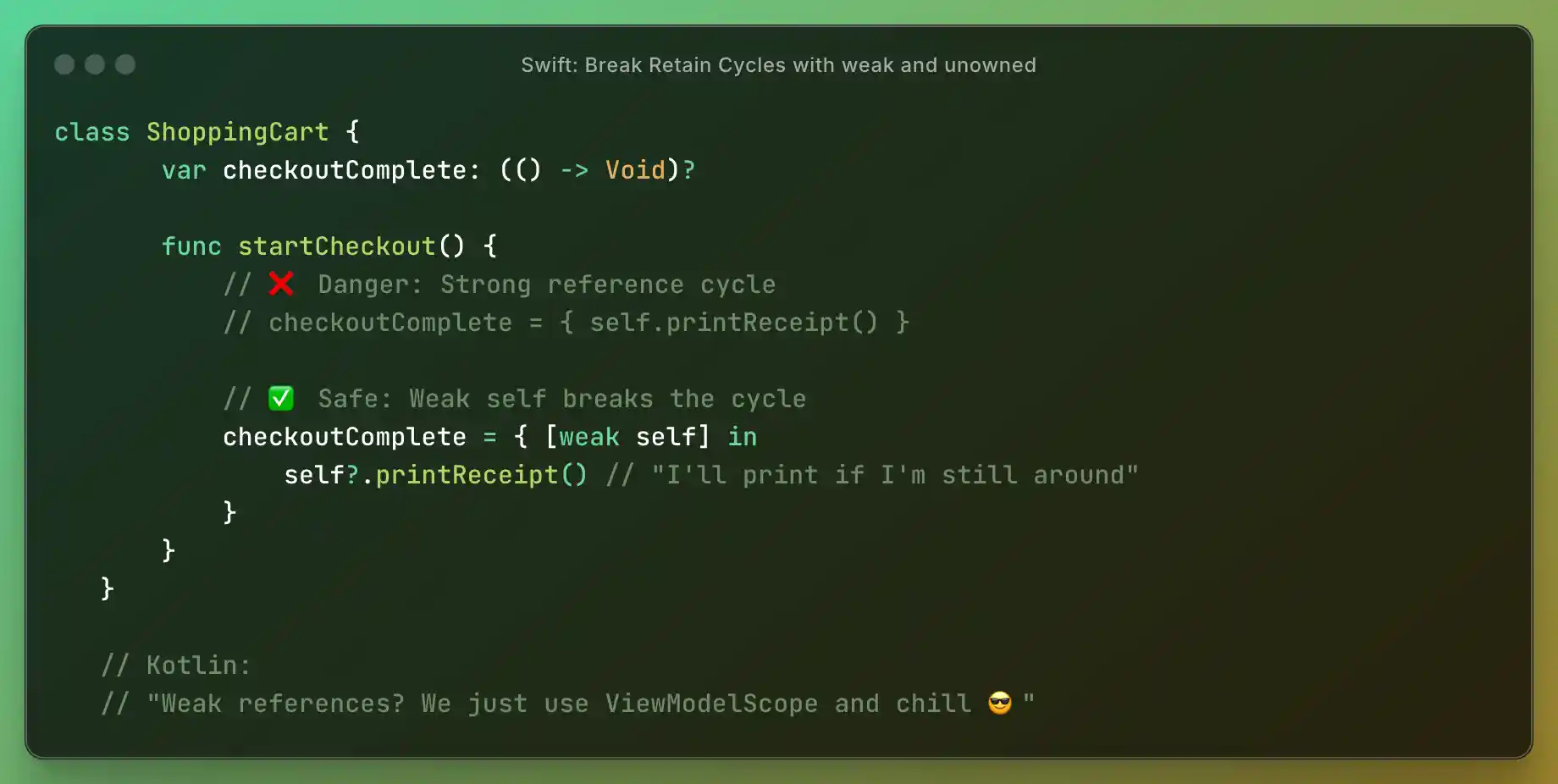
Kotlin GC : "Wow, you have to manually break cycles? In Kotlin, GC just figures it out… eventually." 😏
2. Kotlin: Use val Instead of var
-
Problem: Mutable state increases bugs and GC workload.
-
Solution: Use
val(immutable) by default and reach forvaronly when necessary.
It simplifies code and reduces surprise GC triggers.

Swift ARC : "Cute. In Swift, even let arrays can mutate unless you use struct." 😜
3. Swift: Prefer struct for Lightweight Data
-
Problem: Class instances live on the heap and add ARC overhead.
-
Solution: Use
structfor lightweight, temporary data that doesn’t need reference semantics.
In apps handling large datasets, using structs for transactional models made scrolling in complex table views much smoother.
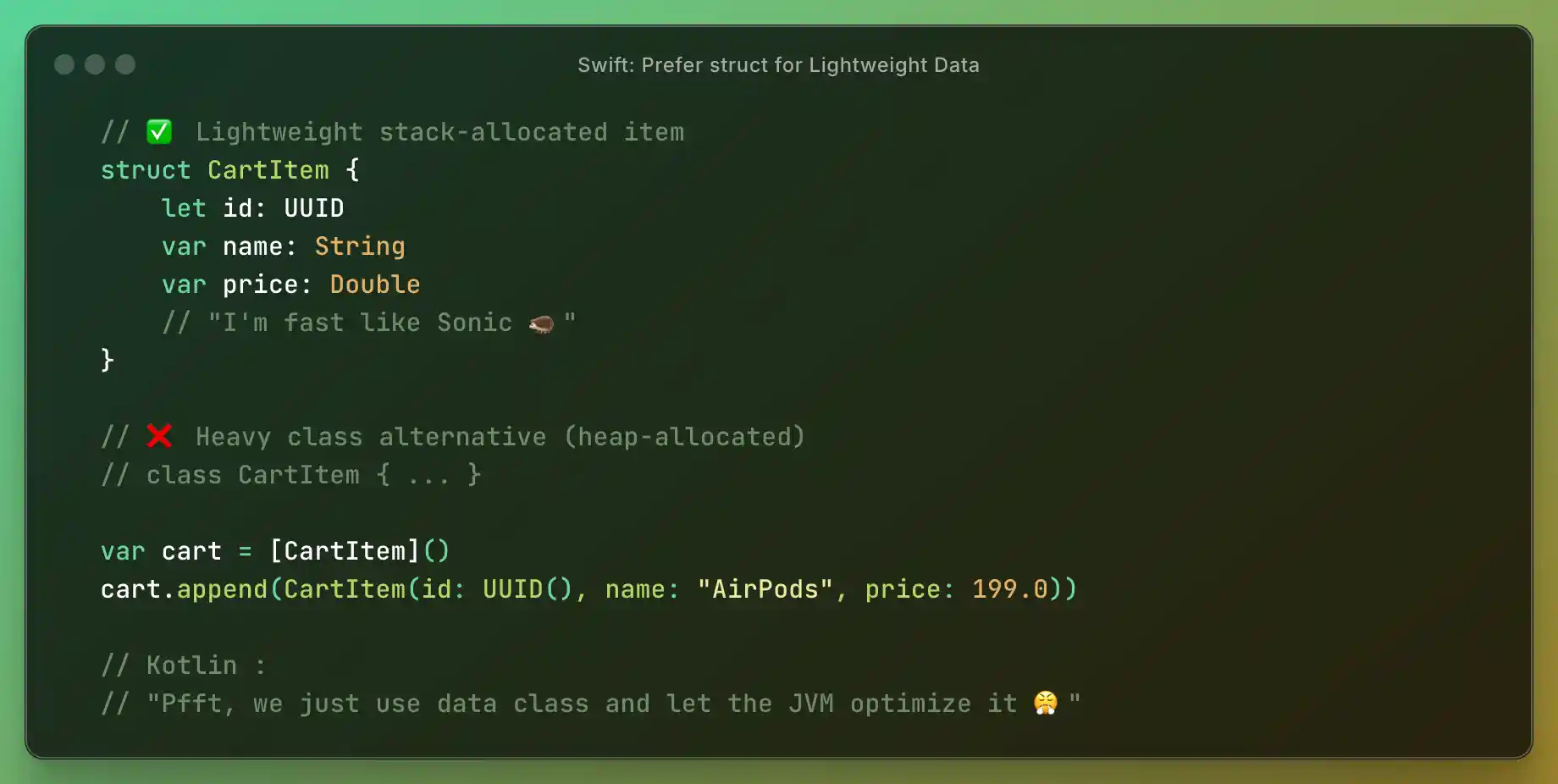
Kotlin GC : "Cool, but can your struct do polymorphism? Oh wait…" 🙃
4. Kotlin: Optimize Collections with Sequence
-
Problem: Chaining List operations creates temporary objects and GC pressure.
-
Solution: Use
Sequencefor lazy evaluation.
Heads-up though. It’s not worth it for small collections since the overhead might outweigh the benefit.
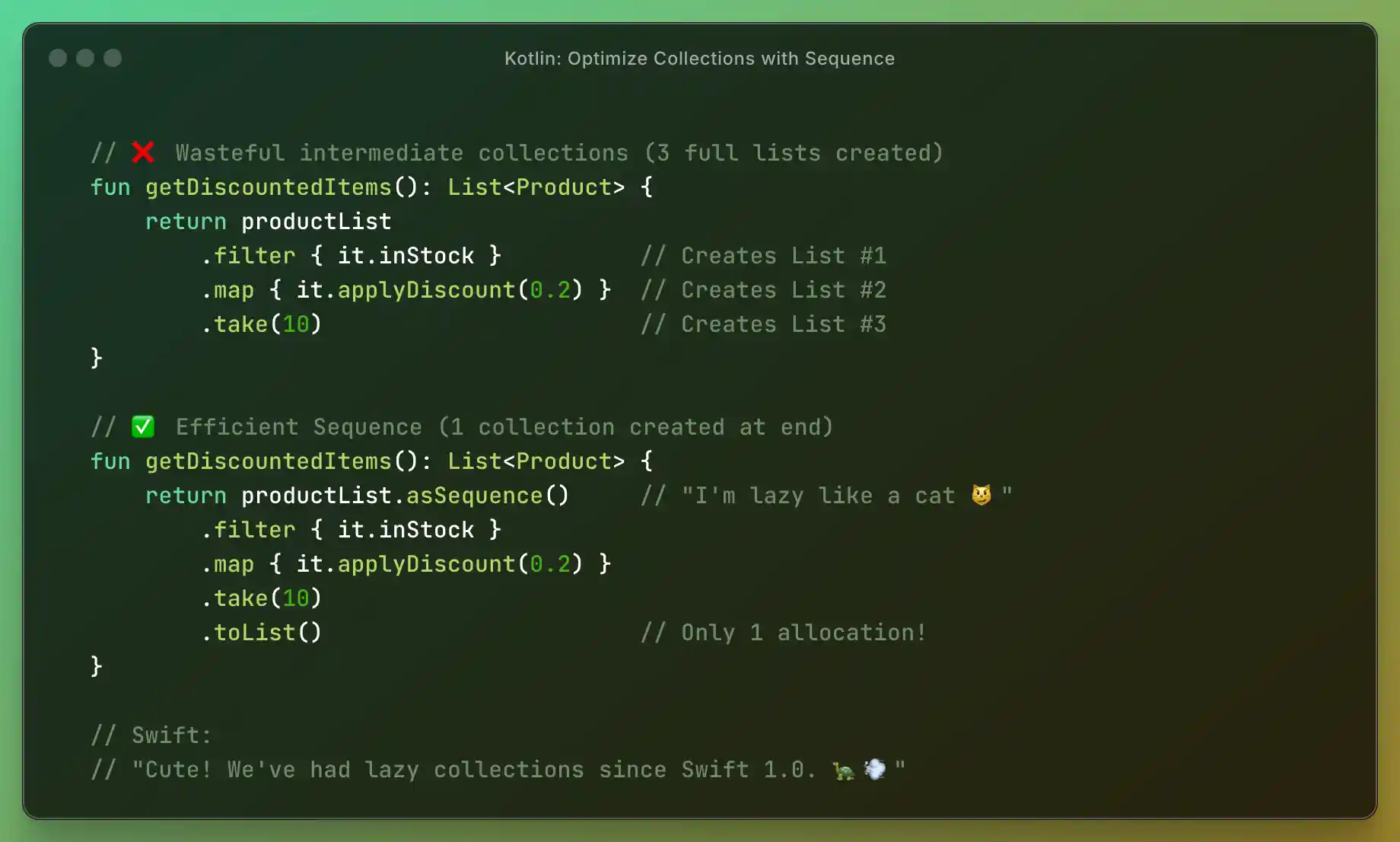
Swift ARC : "Lazy? We’ve had lazy var since 2014." 😎
5. Swift: Use autoreleasepool for Heavy Loops
-
Problem: Temporary objects in loops increase memory usage.
-
Solution: Wrap loops inside
autoreleasepool {}blocks.
These days, Swift’s modern value types like String and
Array manage memory well enough that this is rarely needed, but it’s
good to have in your toolkit.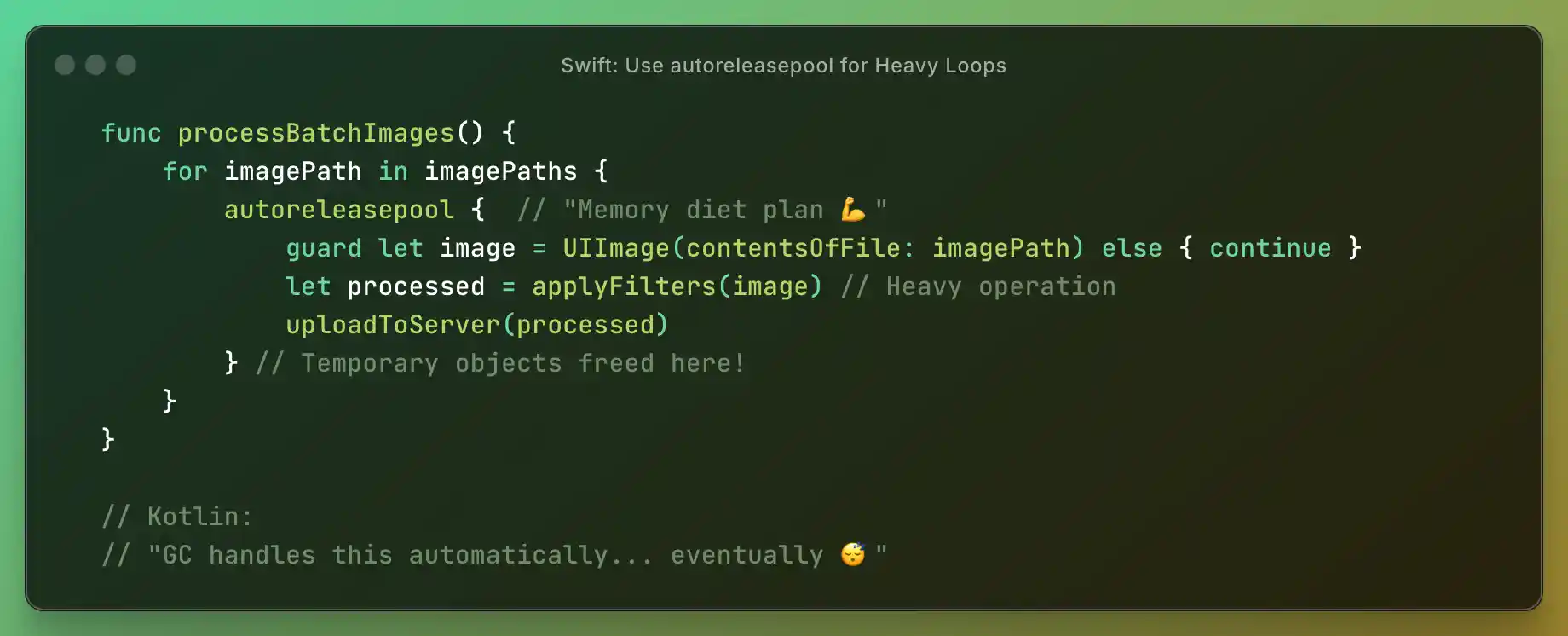
Kotlin GC : "Imagine manually managing memory in 2024…" 🤖
6. Kotlin: Avoid Boxing with Primitive Arrays
-
Problem:
List<Int>boxes primitives, using more memory than necessary. -
Solution: Use
IntArray,FloatArray, and their friends.
While working on real-time analytics for a business management app, switching from List<Double> to DoubleArray shaved noticeable time off financial calculations on mid-tier Android phones.
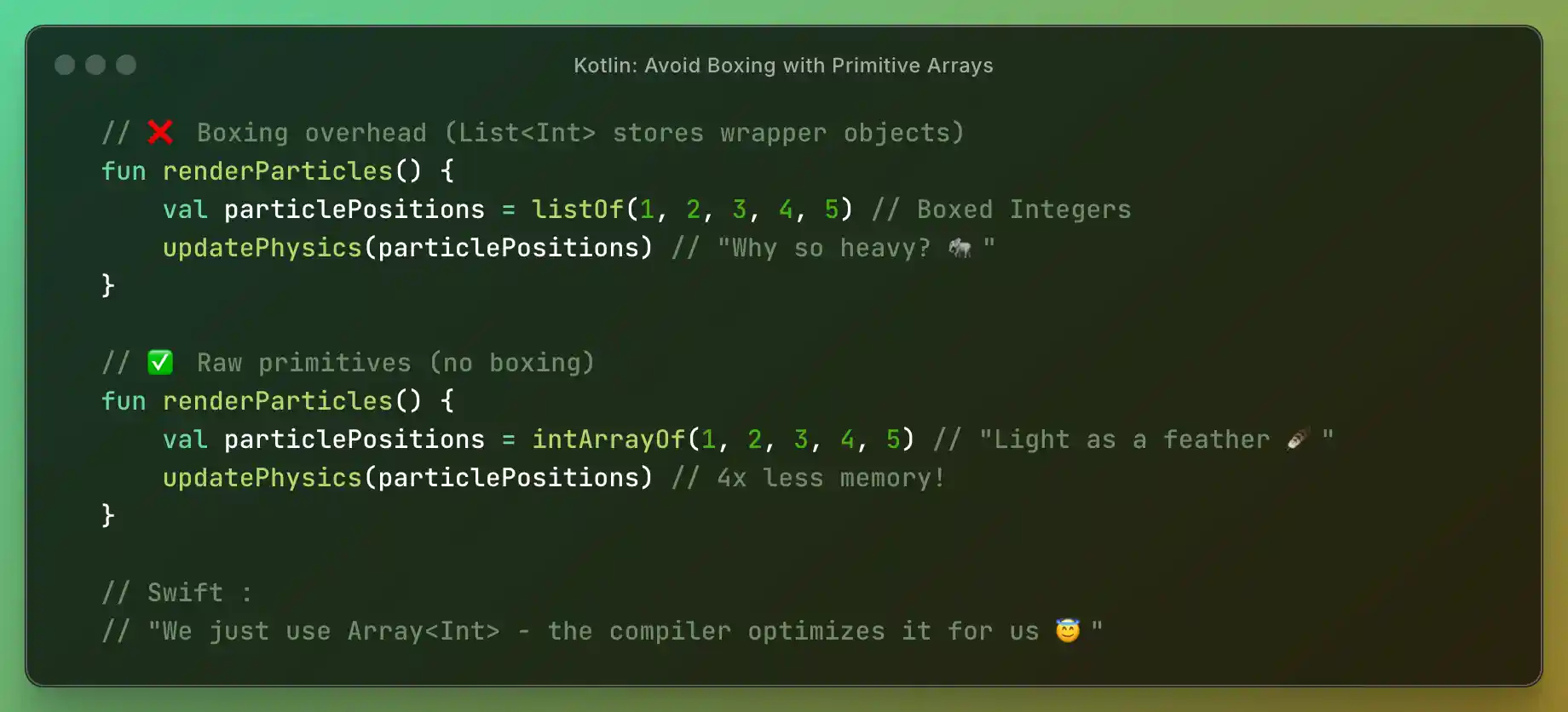
Swift ARC : "We just use Array<Int>. The compiler optimizes it for us. 😇"
In The End
Swift with ARC delivers predictable performance but expects developers to be proactive about breaking reference cycles. Kotlin with GC takes a hands-off approach, though it can introduce small performance dips under heavy memory pressure.
When building mobile apps, knowing these differences matters. Good architecture decisions depend on them. And no matter what language or platform you’re on, profiling your app isn’t a luxury. It’s standard.
After building apps in Swift and Kotlin, I’ve found ARC delivers steadier performance on iOS. On Android, reducing GC pressure around scrolling and heavy screens is what keeps things smooth. It’s the kind of detail no one mentions upfront, but it makes all the difference.
Swift devs: Stop hoarding objects. Use
weak!Kotlin devs: Stop stressing the GC. Use
Sequence!
Both: "Just profile your app, okay?" 🔥
Got an important point on this? Drop it in - always up for learning new tricks.
